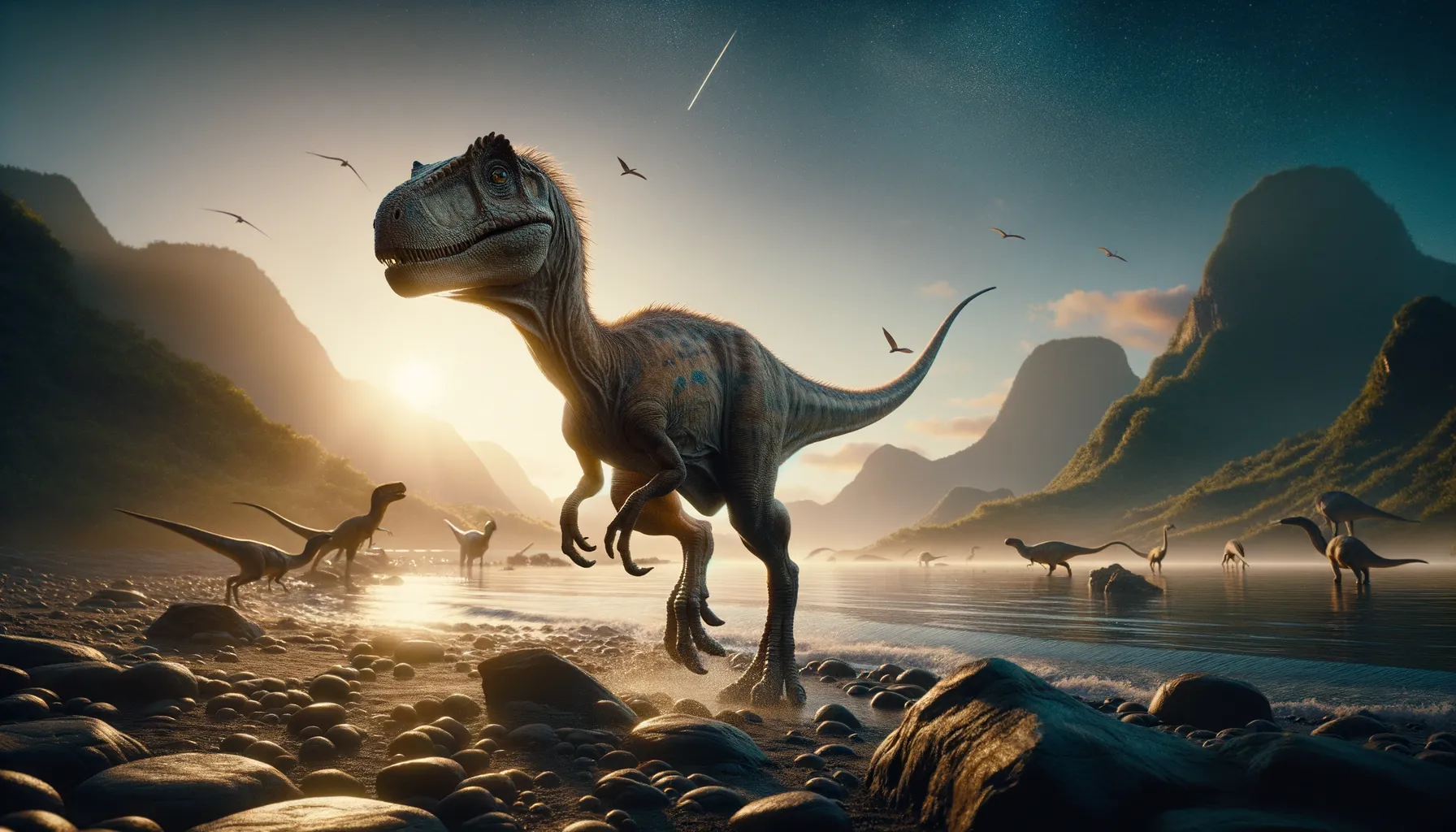
Ignavusaurus
A timid giant from the Jurassic era.
Period
Jurassic
Length
Measured approximately 3 meters in length.
Height
Stood about 1.5 meters tall.
Weight
Estimated to weigh around 200 kilograms.
Ignavusaurus was a small, early sauropod dinosaur known from limited fossil evidence. It walked on two legs and was part of the evolutionary transition towards larger, quadrupedal sauropods. Living during the Early Jurassic period, its discovery provides insights into the adaptation and diversification of early dinosaurs, especially those transitioning from smaller bipedal to larger quadrupedal forms.
Diet
Ignavusaurus was herbivorous, feeding on a variety of plant materials available during its time. Its diet likely consisted of ferns and low-growing vegetation, which suited its bipedal stance.
Hunting
As a herbivore, Ignavusaurus did not hunt other animals. Instead, it foraged for plants across its environment, likely moving to different areas to access food resources.
Environmental challenges
Ignavusaurus faced the ever-changing climate of the Early Jurassic, which included varying temperatures and seasonal shifts. These challenges would have affected the availability of plants, necessitating movement in search of food. Predator presence was another challenge, requiring constant vigilance and hiding tactics.
Speed
Likely slow-moving due to its size.
Lifespan
Probably around 20-30 years.
First discovery
First discovered in the early 2000s in South Africa.
Fun Facts
- Ignavusaurus was a small, herbivorous dinosaur that lived approximately 200 million years ago during the early Jurassic period.
- The name Ignavusaurus means 'lazy lizard' because it was initially thought to be slow and sluggish.
- Fossils of Ignavusaurus have been found in what is now the country of Lesotho in southern Africa.
- This dinosaur was relatively small, about the size of a dog, measuring around 1.5 meters in length.
- Ignavusaurus is believed to have walked on two legs and might have had a long neck to help it reach vegetation.
- As a herbivore, Ignavusaurus likely fed on low-lying plants and possibly some softer leaves from trees.
- Despite its name suggesting laziness, like most dinosaurs, Ignavusaurus would have had its own survival strategies.
Growth and Development
Ignavusaurus likely followed a growth pattern similar to other dinosaurs, hatching from eggs and relying on rapid growth to survive early predation. Its skeletal structure indicates it developed sturdy limbs and body fast enough to adapt to its plant-eating lifestyle. The transition to a larger body would have been essential for reaching more food sources.
Habitat
This dinosaur inhabited regions that were lush, with abundant plant life catering to its herbivorous diet. It likely preferred areas near water sources, such as rivers or lakes, which supported diverse vegetation. The environment was dynamic, requiring adaptability to varying conditions throughout the seasons.
Interaction with other species
Ignavusaurus would have coexisted with various other species, balancing a life of cautious peace with competing herbivores. Predator dinosaurs were a constant threat, influencing its behavior to avoid being easy prey. Social interactions may have involved cautious foraging alongside other herbivores.
Natural lifespan
Lived naturally for about 20-30 years.
Reproduction
Ignavusaurus reproduced by laying eggs, likely in nests hidden amongst dense vegetation to protect from predators. The eggs would have been incubated naturally by the surrounding environment rather than active nesting behavior.
Social behaviour
Little is known about Ignavusaurus' social behavior, though it may have traveled in small groups for increased protection against predators. Herd-like behavior, common among herbivores, could have offered advantages such as protection and better foraging efficiency.
Fossil locations
Fossils of Ignavusaurus have been found primarily in South Africa. These findings help paint a picture of its distribution during the Early Jurassic period, though discoveries are limited and continue to offer new insights.
